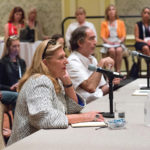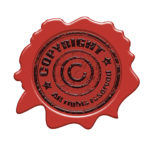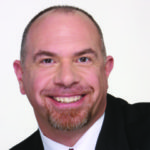By any measure, Michael Hawley has had a spectacular career. He worked as a software engineer with Apple founder Steve Jobs at NeXT, as a research scientist at Lucasfilm, and as a professor at the MIT Media Lab, where he currently serves as director of special projects. But according to Hawley, nothing compares to his being director of the e.g. Conference, which for the last 10 years has brought some of the most creative minds working in a variety of disciplines together to share their ideas.
e.g. was the brainchild of Richard Saul Wurman, founder of the famous TED conference, which Wurman sold in 2004 only to realize that he missed putting it together, according to an interview he gave to Convene in 2011. Wurman created e.g. — which stands for exempli gratia (for example) — to see if he could come up with something even better than TED. “It turned out to be the best conference I had ever done,” he told Convene.
In 2007, Wurman turned e.g. over to Hawley, who since then has kept the conference intimate while pushing to find the most inventive, creative, and unexpected mix of participants possible. The 2015 program opened with a 100-year-old heart surgeon who retired at 95, and closed with an 11-year-old self-taught jazz-piano prodigy from Indonesia. “These are people who have found their mission in life — at least for now,” said Hawley, who is listed as the conference’s “impresario.” They share a quality that Hawley describes as constructive passion. “It’s totally infectious.”
Unlike TED, which delivers daily TED Talks into email inboxes around the world, you almost have to know about e.g. to find it online. It doesn’t market itself in traditional ways — “we’re not always hawking ourselves,” Hawley said — but it’s an understatement to say the conference has strong word of mouth. Testimonials on its website include those from Intuit founder and CEO Scott Cook (“It’s the best conference I go to”) and Harvard physics professor Paul Horowitz (“Absolutely amazing. The most wonderful event I have ever attended.”).
e.g.’s policies are straightforward. Attendance is capped at 500. Tickets are $4,000 each, and are sold on a first-come, first-served basis. (It strikes Hawley as “snooty” to require attendees to apply.) For the conference’s 10th-anniversary program at the Sunset Center in Carmel, California, on April 28–30, 2016, Hawley has invited past presenters to return to share stories and ideas. “I don’t know another conference that rings all the bells in quite the same way,” Hawley said. The “most valuable idea is the spark you haven’t quite caught yet.” Attending e.g. is like “jumping into a breeder reactor — it’s impossible not to jump out glowing like a 100-watt bulb.”
What is your philosophy about the ideal mix of presenters and audience?
It’s guided by a simple ideal: The presenters and the audience should be indistinguishable. All of them are people who make and do extraordinary things, from every field imaginable. The challenge of composing the program is simple: It’s a crazy puzzle, but the solution needs to be one such that every presenter feels they have arrived not only at the most extraordinary event they’ve ever been part of, but at the perfect moment in the flow for them. A bit like solving a Rubik’s Cube, and immensely satisfying when it works out beautifully.
How is attendance managed? What percentage of people come back year over year?
The cap is the room size. But [total attendance] size matters, and 500 or so is the right size.
Most attendees return year after year. We don’t market in traditional ways, but we do invite people who would be exceptional attendees to register and attend. The audience includes not only all the presenters (and many past presenters) but many of the most creative and accomplished talents around. Regular attendees (not presenters) include folks like Amy Tan (novelist), Matt Groening (cartoonist), and Steve Wozniak (computer pioneer).
In recent years, you’ve added a livestream and videos. Why?
It mainly happened because corporate partners (like Cisco) wanted to share the magic of e.g. with their employees. So we needed telepresence to do that. Video streaming of conferences and events has become routine, obviously, but e.g. is a bit more like streaming an opera.
How has your audience changed over the years, particularly in their use of smartphones and social media?
No real change. Look, obviously, everyone tweets away. But e.g. turns out to be an intensely engrossing and very human experience. Everyone is completely absorbed. We don’t even have to remind the audience to shut off phones and put computers away. They do it instinctively, and are enthralled by the talents and insights.
It seems like “TED-style” conferences are proliferating. What keeps e.g. fresh and distinctive?
Remember that line Steve Jobs used at the end of his Stanford speech? “Stay hungry, stay foolish”? We do. We have always organized e.g. as the gathering that attracts the best of the best, in every aspect. We know that every year, without fail, things happen at e.g. that you will remember like it was yesterday for the rest of your life. So we design for that, and it means constantly stepping out of the comfort zone.
We always take chances. We never go after predictable trends. We gamble on unknowns. We respect talents at every age (speakers have ranged from 9 to 100). We have had the world’s greatest painters but also the world’s most notorious art forger. We have had live presentations from the International Space Station. Lessons on penmanship from the royal calligrapher to Queen Elizabeth. Early-morning photo safaris led by the world’s greatest wildlife photographers.
As [legendary 14th-century explorer] Ibn Battuta used to say: “Never the same road twice.”




